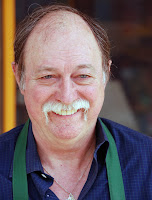From The Colonel
White or Yellow mustard Brassica alba (Brassica hirta/Sinapis alba), Brown mustard Brassica juncea, Black mustard Brassica nigra
Why is mustard yellow?
There are a variety of plants grown for their acrid seeds and leaves collectively called Mustard Greens. The leaves may be used in salads or cooked with, or as a substitute for, spinach. Mustard belongs to the same family as broccoli, Brussels sprouts, collards, kale, and kohlrabi. For centuries mustard has been used for culinary, as well as, medicinal purposes. Most notably it’s used as a curative for the common cold. I don't think there has been a child born before 1950 that has not had to suffer through at least one mustard plaster. The name comes from the Roman mixture of crushed mustard seed and must (unfermented grape juice), called mustum ardens or burning wine.
Because mustard seeds are so small, they have figured in much ancient writings. Mustard is used as an example by Buddah, in the Quran, and by Jesus in one of his parables in the Bible. Not bad for an itty bitty seed. Pope John XXII liked prepared mustard so well that he created a new position within the Vatican, 'grand moutardier du pape', or 'mustard maker to the pope'.
Mustard seeds are sold whole, ground into powder, or processed further in prepared mustard. Most of us know mustard by the form of prepared mustard. It is typically referred to as that “yellow stuff” we put on hot dogs at the ball park. As weird as it may sound, it is not the mustard seed that makes this prepared mustard yellow, but the addition of turmeric to the mix that suddenly makes it very yellow.
There are two major types of mustard seed, white (or yellow) and brown (or Asian). There is a third variety that is black which is the most pungent but has been replaced mostly by brown because it can be grown more easily and economically. White seeds are relatively large. Their flavor is spicy and almost sweet. Brown mustard seeds have a flavor that is hot and slightly bitter. Toast either sort of seeds in a little butter or oil in a skillet until you smell them.
Mustard seed's hot spicy flavor is great with meats, fish, fowl, sauces, and salad dressings. Whole mustard seed is used in pickling or in boiling vegetables such as cabbage or sauerkraut. Brown mustard seeds are an important flavoring in Indian dishes. Powdered mustard has no aroma when dry, but develops a hot flavor when it is mixed with water.
Out of mustard seeds? Try caraway seeds.
Recipes
Cajun Mustard
Maple Mustard BBQ Sauce
Rabbit Pastrami or other Wild Game
Creamy Slaw Dressing
English Pub Mustard

Colonel De Stewart


No comments:
Post a Comment